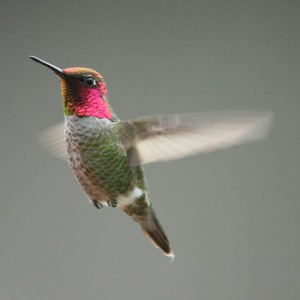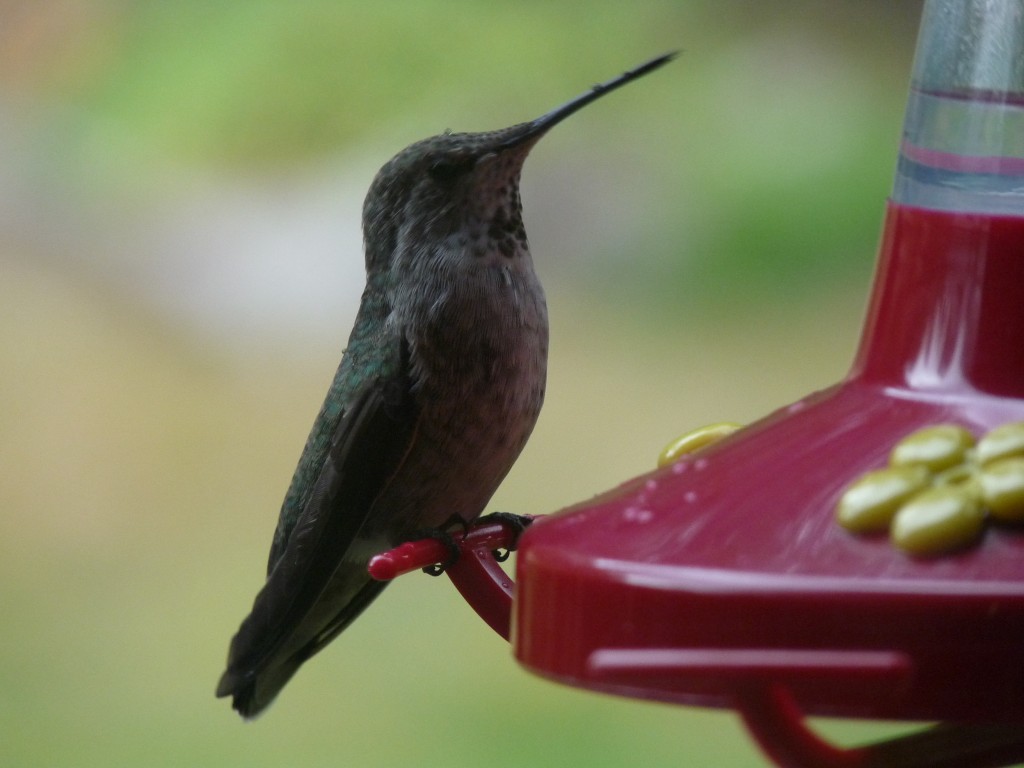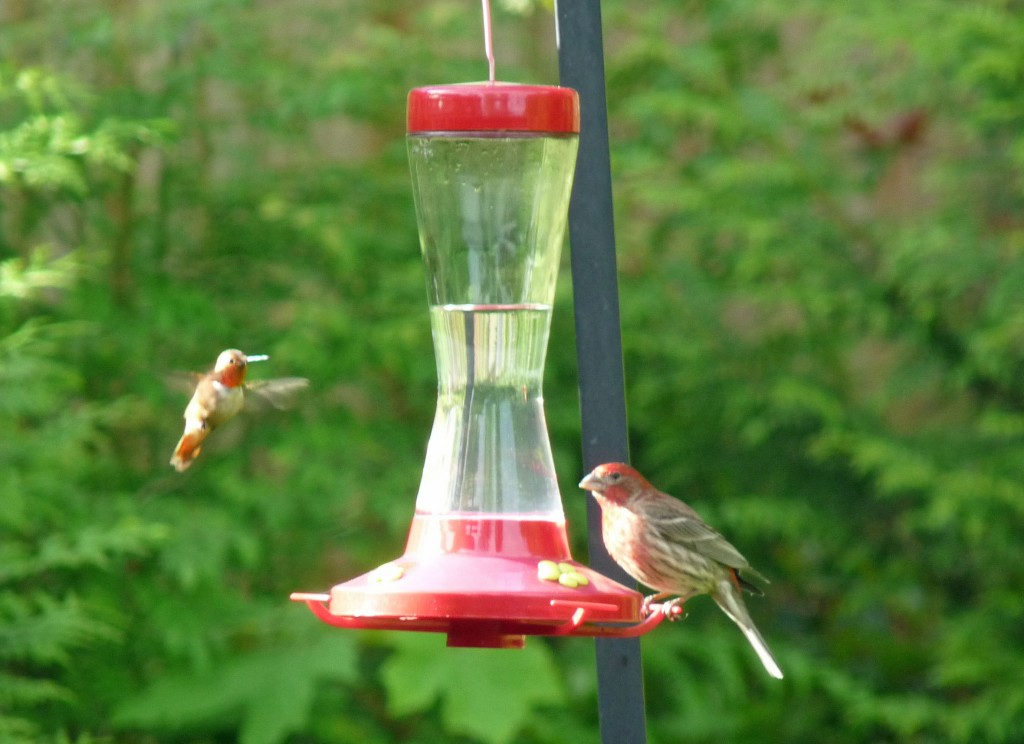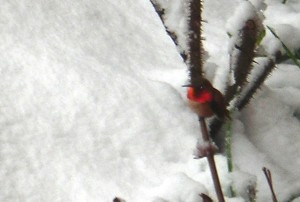The Pacific coast of British Columbia is home to two species of hummingbird, the Rufous (Selasphorus rufus) and the Anna’s (Calypte anna). Like many winter-weary Gabriolans, Rufous hummers spend the winter in Mexico. Then, in the spring, they begin their migratory journey northward, usually arriving back in BC during the third week of March. This has been going on since time immemorial.
Anna’s, on the other hand have been over-wintering in BC only for the past twenty years or so. Pierre Cenerelli wrote all about Anna’s hummingbirds in January on this blog. If you missed his column, you can read it here.
Will I stop the hummers from migrating if I feed them?
Here’s what the Rocky Point Bird Observatory scientists say on this subject, one some people worry about: “Do not worry! Feeders will not stop a bird migrating, a process that is triggered by the bird’s internal clock and levels of sunshine. Anna’s are with us year round and their presence at feeders has just become more obvious because their numbers are increasing locally.” (http://rpbo.org/hummingbirds.php)
Anna’s or Rufous?
If you live in southwestern BC, and it’s winter, and you have a hummer in your yard, it’s an Anna’s. But in the spring, when both species are around, it could be either a Rufous or an Anna’s. You can tell them apart using these visual clues:
1. The male Anna’s has a brilliant red gorget, or throat patch, that extends right over his head, making him a sparkling redhead when the sun shines on his iridescent hood. Striking emerald green plumage covers his back and bleeds onto his sides and white belly.

Male Anna’s Hummingbird. Note the iridescent red ‘hood’ and the small white dots beside the eye. (Photo by Alan Vernon. CC license.)
2. The male Rufous has an iridescent gorget but it does not extend beyond his throat. The rest of his body is largely rufous, dark brown, and white, with some green in the wings in certain light.
3. The female Anna’s is mostly emerald green and grey with just a small iridescent red gorget that doesn’t extend over her head. (Apologies for the poor photo.) She has NO RUFOUS COLOURING ANYWHERE.
4. The female Rufous has a mostly green back, rufous sides, and a white belly. She has some greenish spotting on her throat, usually with a red center spot.
Whether Rufous or Anna’s, the House Finch always wins!
Keeping Anna’s Alive Through the Winter
On Gabriola Island, bird counters tallied 28 Anna’s during the recent Christmas Bird Count. Now, in winter, all that matters to these overwintering beauties in BC is staying alive. But even a lone Rufous had to cope with winter weather on Gabriola during a surprise spring snow storm a few years ago.
Not all Anna’s do survive the winter, of course. But if you have a feeder up, there are things you can do to help.
1. Keep your hummer feeder clean. Dirty feeders can be the cause of “hummingbird tongue”, a fungal infection that causes the tongue to swell, making it impossible for the bird to eat. An affected bird will sit at a feeder, its swollen tongue just hanging out of its mouth. Eventually it dies of starvation. Since sugar-water is conducive to the growth of pathogens, the only remedy is a preventative one: CLEAN feeders. To clean your feeder, empty and thoroughly wash the whole thing in hot water using a bottle brush to scrub the interior glass. Clean all removable parts with a toothbrush and/or Q-tip. Make sure every speck of foreign material is removed and it’s clean enough for YOU to drink from. As a maintenance routine, I recommend the 1-2-3- rule. In the hot summer, clean once a day. In spring-like weather clean every two days. In the winter clean every three days. If your life is too busy and this cleaning regimen is too onerous, you can still enjoy hummingbirds by planting fuschia and flowering currant and many other kinds of brightly-coloured native plants in your garden.
2. Keep the nectar from freezing. (What’s more heartbreaking than seeing an Anna’s sitting on the perch of a feeder with frozen nectar inside?) Some people (me included) have two or three feeders they rotate as needed, one in the house, staying warm, one outside, getting cold. When the outside feeder gets very cold (or freezes overnight) bring it in and replace it with the other one. Some people keep their feeders from freezing by placing homemade warmers, often concocted from light bulbs, just under the feeder. Others wrap feeders in pipe insulation or beer mug insulators or even woolen socks.
3. Consider using a sweeter than usual solution (3 sugar to 1 water) in winter because it doesn’t freeze as quickly as the four-to-one solution and provides increased calories.
4. Place your feeders a good distance apart so that the hummer has to fly to get to them, thereby creating body heat.
Then, just enjoy the hummers!









Pingback: This Week in Birding 54 by Charlotte Wasylik | Nemesis Bird
Pingback: Birding News #54 | Prairie Birder